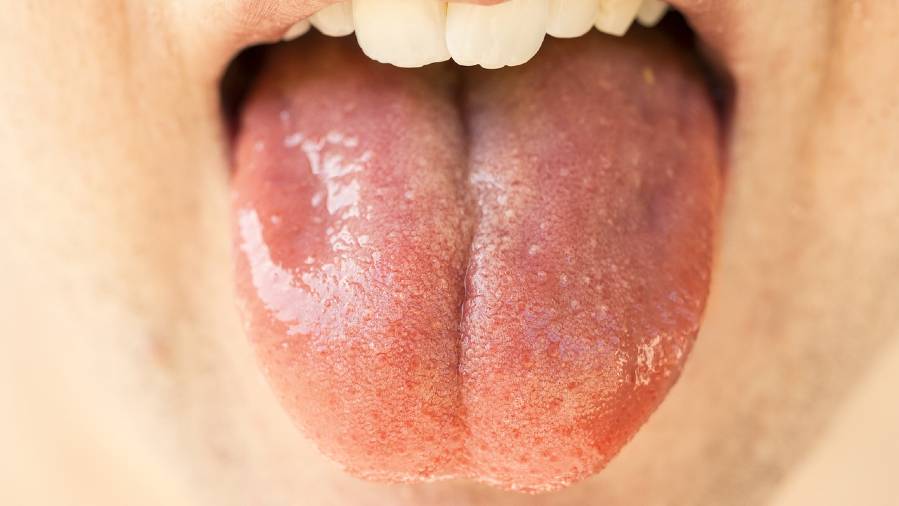A few years ago, scientists from Penn’s School of Dental Medicine found that the dental plaque that gives rise to ECC is composed of both a bacterial species, Streptococcus mutans, and a fungus, Candida albicans. The two form a sticky symbiosis, known scientifically as a biofilm, that becomes extremely virulent and difficult to displace from the tooth surface.
Now, a new study from the group offers a strategy for disrupting this biofilm by targeting the yeast-bacterial interactions that make ECC plaques so intractable. In contrast to some current treatments for ECC, which use antimicrobial agents that can have off-target effects, potentially harming healthy tissues, this treatment uses an enzyme specific to the bonds that exist between microbes.
“We thought this could be a new way of approaching the problem of ECCs that would intervene in the synergistic interaction between bacteria and yeast,” says Geelsu Hwang, an assistant professor in Penn Dental Medicine and senior author on the study, published in the journal mBio. “This offers us another tool for disrupting this virulent biofilm.”
The work builds off findings from a 2017 paper by Hwang and colleagues, including Hyun (Michel) Koo of Penn Dental Medicine, which found that molecules call mannans on the Candida cell wall bound tightly to an enzyme secreted by S. mutans, glycosyltransferases (Gftb). In addition to facilitating the cross-kingdom binding, Gftb also contributes to the stubbornness of dental biofilms by manufacturing gluelike polymers called glucans in the presence of sugars.
While some cases of ECC are treated with drugs that kill the microbes directly, potentially reducing the number of pathogens in the mouth, this doesn’t always effectively break down the biofilm and can have off-target effects on “good” microbes as well as the soft tissues in the oral cavity.
Hwang and colleagues wanted to try a different approach that would directly target the insidious interaction between yeast and bacteria and opted to target the mannans in the Candida cell surface as a point of contact.
Using three different mannan-degrading enzymes, they applied each to a biofilm growing on a tooth-like surface in a human saliva medium and left it for five minutes. Following the treatment, they noted that the overall biofilm volume was reduced. Using powerful microscopy, they also observed drastic reductions in the biofilm thickness and interactions between bacteria and yeast. The pH of the surrounding medium was higher when exposed to the enzymes, indicating an environment that is not as acidic and thus less conducive to tooth decay.
They also measured how easy it was to break up the biofilm after treatment, using a device that applies a stress, akin to tooth brushing.
“The biofilm structure was more fragile after the enzyme treatment,” Hwang says. “We were able to see that the biofilms were more easily removed.”
To confirm the mechanism of their approach—that the mannan-degrading enzymes were weakening the binding between yeast and bacteria—the team used atomic-force microscopy to measure the bonds between Candida and Gftb. The therapy, they found, reduced this binding force by 15-fold.
Finally, they wanted to get a sense of how well-tolerated these enzymes would be when used in the oral cavity, especially since children would be the patient group targeted. Applying the enzymes to human gingival cells in culture, they found no harmful impact, even when they used a concentrated form of the enzymes. In addition, they observed that the treatment didn’t kill the bacteria or yeast, a sign that it could work even if the microbes developed mutations that would lend them resistance against other types of therapies.
The researchers kept the application time relatively short at five minutes though they hope to see activity in an even shorter time, like the two minutes that is recommended for tooth brushing. Hwang says they may consider a non-alcohol-based mouthwash with these enzymes added that could be used by children as a preventive measure against ECC.
The researchers hope to continue pursuing this possibility with additional follow up, including testing these enzymes in an animal model. With more successes, they aim to add another tool for fighting the public health threat of ECC.
Geelsu Hwang is an assistant professor in the Department of Preventive and Restorative Sciences in the University of Pennsylvania School of Dental Medicine.
Hwang’s coauthors were Hye-Eun Kim, Atul Dhall, Yuan Liu, Marwa Mohammed Barwazir, and Hyun (Michel) Koo of Penn’s School of Dental Medicine.
The study was supported in part by the National Institutes for Dental and Craniofacial Research (grants DE027970 and DE025220) and Josephine and Joseph Rabinowitz Award.


